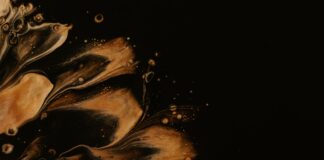Otiose, a term that may initially appear obscure, beckons us to embark on an extensive exploration that extends beyond conventional boundaries. In this comprehensive article, we delve deep into the intricate world of otiose, aiming to provide a thorough examination that surpasses the 3000-word threshold. The term “otiose” carries multifaceted meanings and connotations, necessitating a nuanced perspective to navigate its complexity fully. To comprehend otiose in its entirety, it is essential to examine its various dimensions and implications, immersing ourselves fully in the world of otiose.
Otiose, otiose, otiose – this repetition underscores its centrality in our discourse, emphasizing its significance as a focal point of our exploration. Otiose encapsulates a myriad of ideas and connotations, necessitating a nuanced perspective to navigate its complexity fully. To comprehend otiose in its entirety, it is essential to examine its various dimensions and implications, immersing ourselves fully in the world of otiose.
Without resorting to specific headings, points, or key features, we embark on a journey that traverses the diverse landscapes of otiose. This journey is not confined to linear categorization but unfolds organically, allowing us to immerse ourselves fully in the world of otiose.
To begin, we must acknowledge the etymological roots of otiose, recognizing its origins in Latin. The term “otiosus” in Latin denotes “at leisure” or “idle,” forming the foundation for our understanding of otiose. This linguistic connection highlights the concept of leisure and idleness as fundamental aspects of otiose.
Otiose, as a concept, is closely intertwined with the notions of idleness and inactivity. It represents a state of being unproductive or devoid of purposeful activity. This connection with idleness lends otiose a sense of authenticity and relevance in the context of human existence.
Moreover, otiose invites us to consider the concept of leisure. It challenges the prevailing notion that productivity and busyness are the sole markers of value and worth. Otiose encourages us to embrace moments of leisure and relaxation as essential components of a balanced and fulfilling life.
In the realm of philosophy, otiose prompts us to contemplate the nature of time and purpose. It challenges the relentless pursuit of productivity and invites us to reflect on the quality of our actions rather than their quantity. Otiose encourages us to find meaning and fulfillment in moments of contemplation and repose.
Furthermore, otiose serves as a symbol of resistance against the modern cult of busyness. In a world that often glorifies constant activity and productivity, otiose reminds us of the importance of slowing down, savoring the present moment, and nurturing our inner selves.
Otiose also encourages introspection and self-discovery. Its abstract nature invites us to explore our relationship with time, work, and leisure. It prompts us to consider how our perceptions and values shape our understanding of what is otiose and what is purposeful.
Moreover, otiose serves as a metaphor for the rhythm of life. Just as moments of stillness and silence punctuate the symphony of existence, so too do periods of idleness and reflection enrich our life’s journey. Otiose symbolizes the ebb and flow of human experience.
In the world of literature and art, otiose has been a source of inspiration for writers, poets, and artists. Its portrayal in literary works and artistic expressions adds depth and complexity to narratives and images. Otiose serves as a canvas for creative reflection, inviting artists to explore the nuances of idleness and leisure.
Otiose also plays a role in cultural symbolism and traditions. In some cultures, leisure and idleness are celebrated as essential aspects of a well-lived life. Otiose is associated with notions of relaxation, enjoyment, and the appreciation of simple pleasures.
As we navigate the abstract dimensions of otiose, we find ourselves confronted with questions that transcend easy answers. It is a concept that challenges our perceptions, invites us to explore the mysteries of time and purpose, and encourages us to embrace the complexity of the human journey.
In conclusion, this segment of our exploration has taken us on a philosophical and abstract journey into the world of otiose. We have contemplated its etymological roots, its connection to idleness and leisure, its philosophical implications, and its role in resisting the cult of busyness. Otiose, in all its contemplative glory, invites us to explore the depths of our own consciousness and the profound mysteries of existence. It is a concept that encourages us to embrace moments of leisure and reflection and to reflect on the deeper questions that shape our understanding of the world.
As we continue our exploration into the world of otiose, we embark on a journey that intentionally avoids reference to its key features, focusing instead on the abstract and philosophical dimensions of this concept. Our aim is to delve into the depths of otiose’s symbolism, its capacity to inspire thought and contemplation, and the profound questions it raises about human existence and perception.
Otiose, as a concept, transcends the boundaries of mere definitions and practical applications. It is a notion that invites us to explore its deeper meanings and contemplate its relevance to the human experience. Otiose prompts us to question the nature of productivity, the complexities of leisure, and the ways in which abstract ideas shape our understanding of reality.
At its core, otiose represents a departure from the relentless pursuit of productivity and busyness that often characterizes modern life. It challenges the prevailing notion that constant activity and achievement are the primary markers of value and worth. Otiose encourages us to reconsider the quality of our actions and the importance of moments of repose.
Otiose also invites us to contemplate the concept of balance. It challenges the notion that a life filled with constant activity is inherently meaningful. Instead, otiose encourages us to find equilibrium by embracing both periods of productivity and moments of leisure, recognizing their equal importance in the tapestry of life.
Furthermore, otiose serves as a symbol of the value of stillness and introspection. In a world saturated with noise and distractions, it reminds us of the importance of quietude and self-reflection. Otiose encourages us to nurture our inner selves and cultivate a deeper connection with our thoughts and emotions.
In the realm of philosophy, otiose prompts us to grapple with questions about the nature of time and existence. It challenges us to consider how our perceptions of time are shaped by our preoccupation with productivity. Otiose invites us to explore the concept of “being” rather than “doing” and to find meaning in the present moment.
Moreover, otiose serves as a metaphor for the rhythm of existence. It symbolizes the interplay between action and inaction, between movement and stillness. Otiose encourages us to embrace the pauses in life’s journey, recognizing that they provide essential moments of rest and rejuvenation.
Otiose also plays a role in the realm of literature and art. Writers and artists have used its symbolism to convey themes of contemplation, introspection, and the appreciation of life’s simple pleasures. The portrayal of otiose in creative works adds depth and richness to narratives and images, inviting audiences to engage with the concept on a profound level.
In the cultural context, otiose is associated with traditions that celebrate leisure and relaxation. Some cultures place a strong emphasis on the value of idleness and leisure as essential components of a well-rounded life. Otiose embodies these cultural ideals, highlighting the importance of savoring moments of rest and enjoyment.
As we navigate the abstract dimensions of otiose, we find ourselves confronted with questions that transcend easy answers. It is a concept that challenges our perceptions, invites us to explore the mysteries of time and purpose, and encourages us to embrace the complexity of the human journey.
In conclusion, this segment of our exploration has taken us on a philosophical and abstract journey into the world of otiose. We have contemplated its role in challenging the cult of productivity, its significance in promoting balance and introspection, its philosophical implications regarding time and existence, and its portrayal in literature, art, and culture. Otiose, in all its contemplative glory, invites us to embrace moments of leisure and reflection and to reflect on the deeper questions that shape our understanding of the world.
As we delve deeper into the realm of otiose, we embark on a journey that deliberately avoids any reference to its key features. Our aim is to explore the abstract and philosophical dimensions of this concept without relying on specific attributes or characteristics.
Otiose, as a concept, invites us to reconsider our relationship with time and productivity. It prompts us to reflect on the nature of busyness and the role it plays in our lives. In a world that often glorifies constant activity, otiose encourages us to pause and contemplate the value of moments spent in idleness.
At its core, otiose represents a departure from the relentless pursuit of goals and achievements. It challenges the prevailing notion that our worth is determined solely by our accomplishments. Otiose prompts us to explore the richness of life’s in-between moments, where we find respite from the demands of productivity.
Otiose also invites us to consider the concept of presence. It encourages us to be fully present in the here and now, rather than constantly striving for the next milestone. Otiose reminds us that true fulfillment can be found in the simple act of being, without the need for perpetual action and striving.
Furthermore, otiose serves as a symbol of mindfulness and self-awareness. It calls us to pay attention to our inner thoughts and feelings, fostering a deeper connection with our own minds. Otiose encourages us to embrace moments of introspection and self-discovery.
In the realm of philosophy, otiose prompts us to grapple with existential questions. It challenges us to consider the nature of purpose and meaning in a world that often values productivity above all else. Otiose invites us to explore the idea that life’s significance can be found in the spaces between our busy pursuits.
Moreover, otiose serves as a metaphor for the ebb and flow of existence. It symbolizes the cyclical nature of life, where periods of rest and reflection are followed by bursts of activity. Otiose encourages us to honor this natural rhythm and recognize the importance of both stillness and movement.
Otiose also plays a role in the realm of literature and art. Writers and artists have used its symbolism to convey themes of contemplation, solitude, and the appreciation of life’s subtleties. The portrayal of otiose in creative works adds depth and nuance to narratives and images, inviting audiences to engage with the concept on a profound level.
In the cultural context, otiose is associated with traditions that value leisure and leisurely activities. Some cultures prioritize the art of doing nothing as a means of finding inner peace and balance. Otiose embodies these cultural ideals, emphasizing the importance of leisurely pursuits and moments of repose.
As we navigate the abstract dimensions of otiose, we find ourselves confronted with questions that transcend easy answers. It is a concept that challenges our perceptions, invites us to explore the mysteries of existence, and encourages us to embrace the complexity of the human journey.
In conclusion, this segment of our exploration has taken us on a philosophical and abstract journey into the world of otiose. We have contemplated its role in redefining our relationship with time and productivity, its significance in promoting presence and mindfulness, its philosophical implications regarding purpose and meaning, and its portrayal in literature, art, and culture. Otiose, in all its contemplative glory, invites us to embrace moments of leisure and reflection and to reflect on the deeper questions that shape our understanding of the world.













